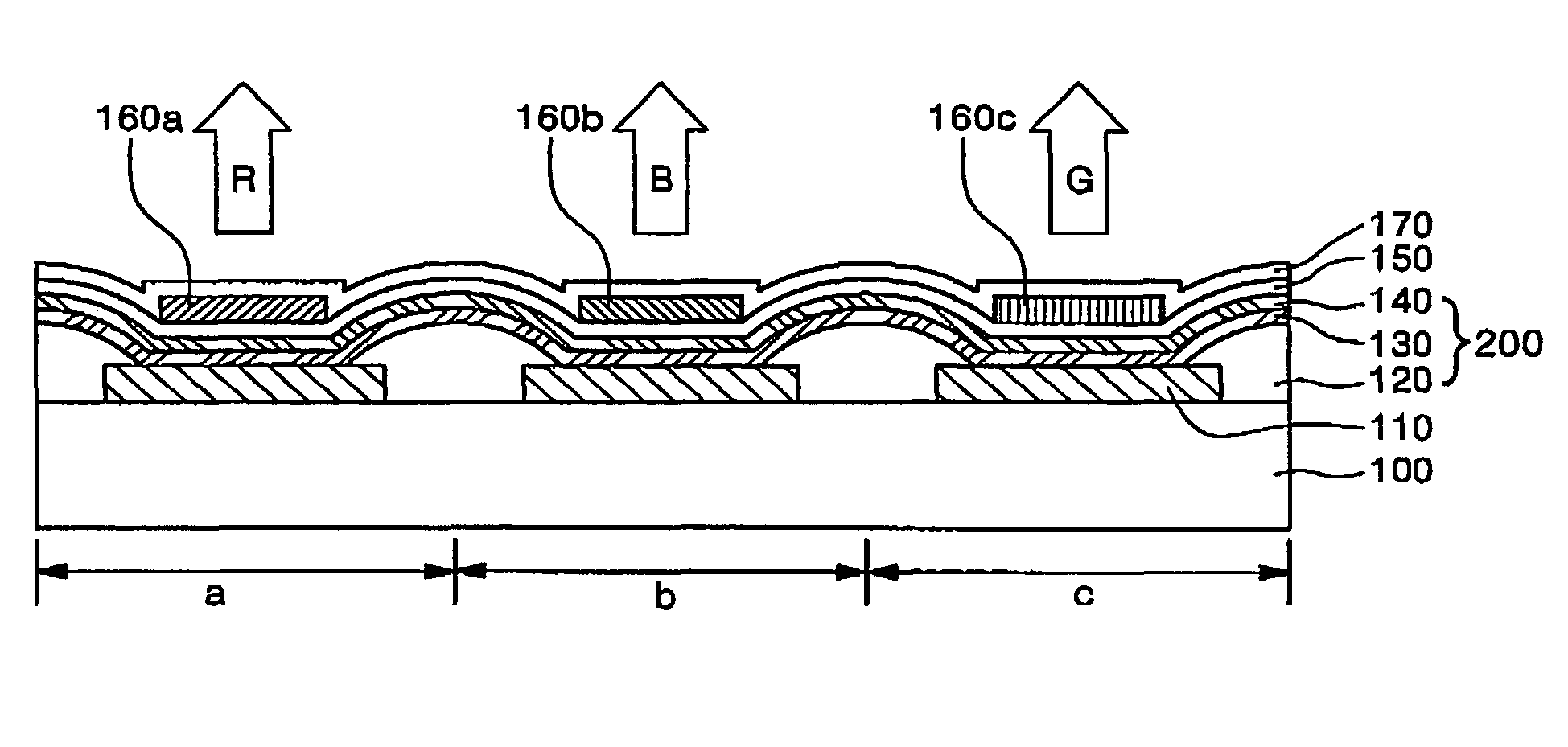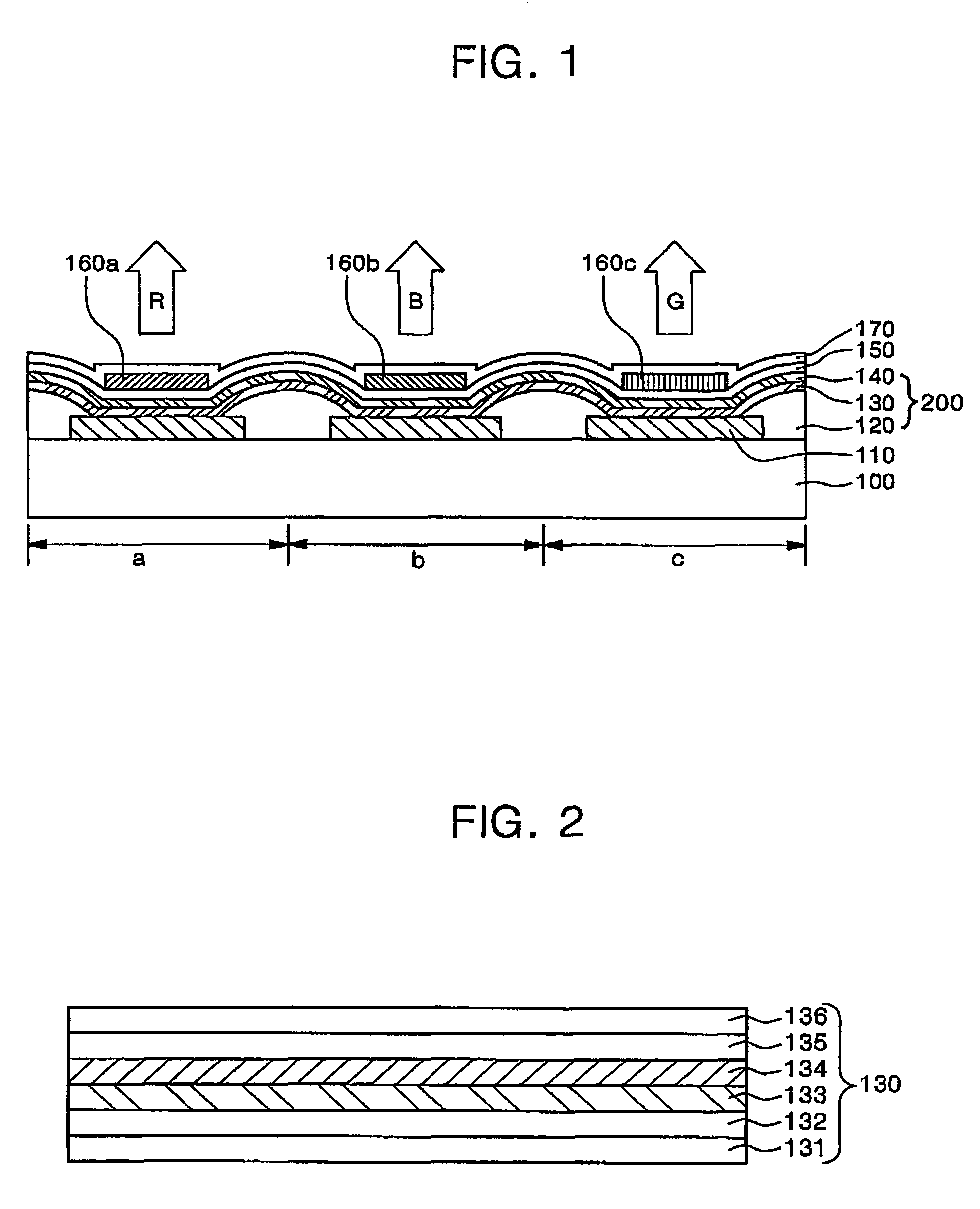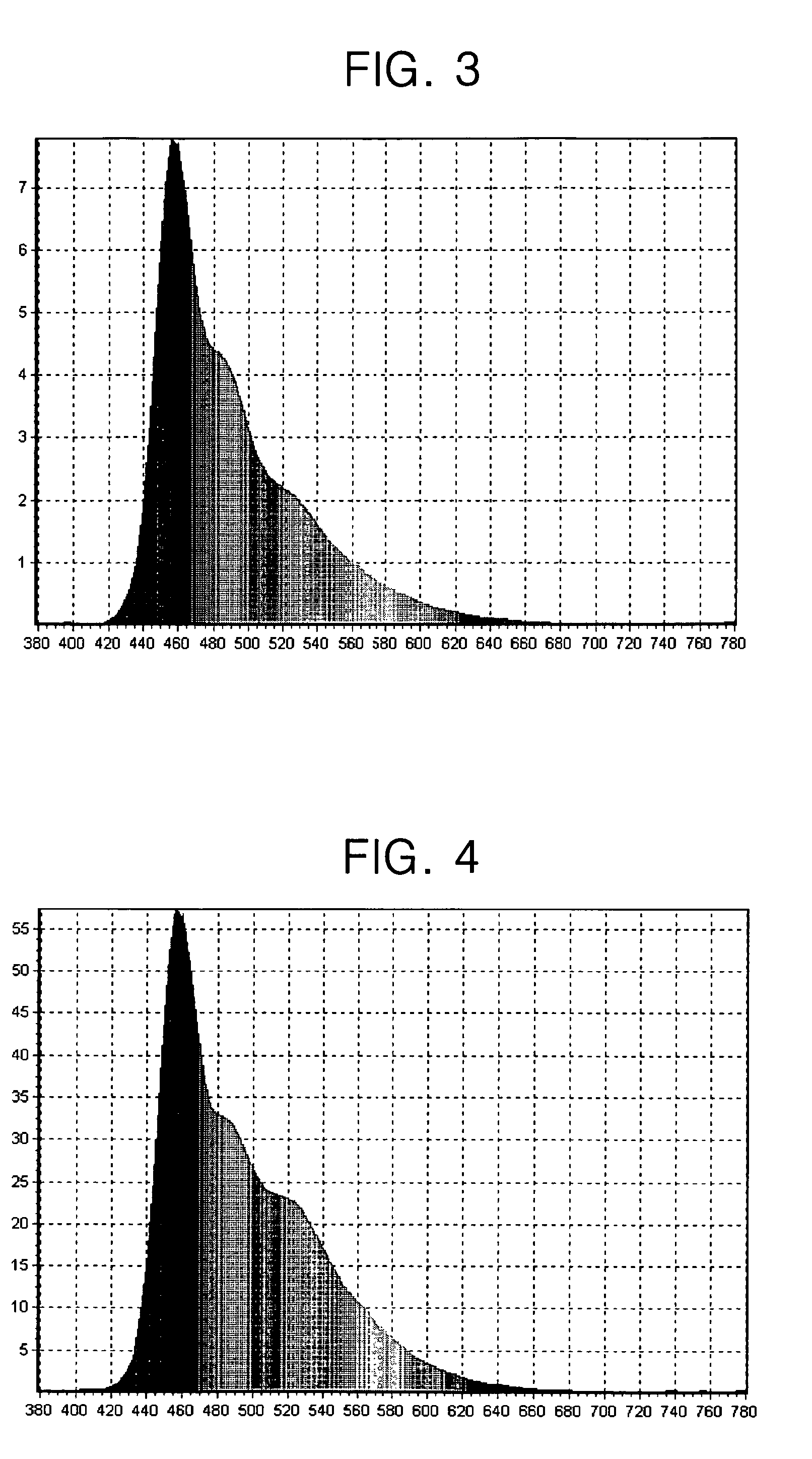Full-color electroluminescent display device with multiple emission layers and method of fabricating the same
a technology of electroluminescent display device and emission layer, which is applied in the manufacture of electrode systems, electric discharge tube/lamps, and discharge tube luminescent screens, etc. it can solve the problems of low luminescent efficiency, long manufacturing process, and low lifespan of cyan emission materials, so as to improve luminescent efficiency, improve structure, and enhance blue, green and red color purity and luminescent efficiency.
- Summary
- Abstract
- Description
- Claims
- Application Information
AI Technical Summary
Benefits of technology
Problems solved by technology
Method used
Image
Examples
example 1
[0066]A 15 Ω / cm2 (1200 Å) ITO glass substrate (Corning) having an anode electrode as a lower electrode was cut to a size of 50 mm×50 mm×0.7 mm, cleaned in an ultrasonic bath containing isopropyl alcohol and pure water for 5 minutes, irradiated with ultraviolet (UV) light for 30 minutes, and then exposed to ozone (O3) for cleaning. Subsequently, the prepared ITO glass substrate was loaded into a vacuum evaporation apparatus.
[0067]Next, IDE 406 (Idemitsu Kosan Co., Ltd.) was vacuum-deposited to a thickness of 600 angstroms onto the glass substrate to form a HIL and 4,4′-bis[N-(1-naphthyl-1-)-N-phenyl-amino]-biphenyl (NPB) was vacuum-deposited to a thickness of 200 angstroms to form a HTL. Subsequently, IDE140 and IDE105 (Idemitsu Kosan Co., Ltd.) were mixed at a weight ratio of about 98:2 and applied to the HTL to have a thickness of 150 angstroms to form a first EML capable of emitting blue light. Next, IDE 140 and C545T (Hayashibara) were mixed at a weight ratio of about 98:2 and ap...
example 2
[0071]An OLED was formed according to the procedure outlined in Example 1, except that a green color conversion layer, as opposed to a blue color filter, was applied to the OLED. In particular, polyvinyl chloride resin having a molecular weight of 45,000 and containing 0.5 wt % of coumarine 6 was dissolved in cyclohexanone to obtain ink having a solid content of 25%. Subsequently, the obtained ink was spin-coated onto the OLED and dried at a temperature of 80° C. for 1 hour to form a green OLED having a green color conversion layer with a film thickness of about 17 to about 18 μm.
[0072]The green OLED exhibited luminance of 1431 cd / m2, luminous efficiency of 7.16 cd / A at a voltage of 6.5 V, and had CIE color coordinates of x=0.271 and y=0.630, which confirmed green emission.
example 3
[0073]An OLED was formed according to the procedure outlined in Example 1, except that a red color conversion layer, as opposed to a blue color filter, was applied to the OLED. In particular, polyvinyl chloride resin having a molecular weight of 45,000 and containing 0.5 wt % of coumarine 6, 0.5 wt % of rhodamine 6G, and 0.5 wt % of rhodamineB was dissolved in cyclohexanone to obtain ink having a solid content of 25%. Subsequently, the obtained ink was spin-coated onto the OLED and dried at a temperature of 80° C. for 1 hour to form a red OLED having a red color conversion layer with a film thickness of about 17 to about 18 μm.
[0074]The red OLED exhibited luminance of 437 cd / m2, luminous efficiency of 2.19 cd / A at a voltage of 6.5 V, and had CIE color coordinates of x=0.622 and y=0.368, which confirmed red emission.
PUM
 Login to View More
Login to View More Abstract
Description
Claims
Application Information
 Login to View More
Login to View More - R&D
- Intellectual Property
- Life Sciences
- Materials
- Tech Scout
- Unparalleled Data Quality
- Higher Quality Content
- 60% Fewer Hallucinations
Browse by: Latest US Patents, China's latest patents, Technical Efficacy Thesaurus, Application Domain, Technology Topic, Popular Technical Reports.
© 2025 PatSnap. All rights reserved.Legal|Privacy policy|Modern Slavery Act Transparency Statement|Sitemap|About US| Contact US: help@patsnap.com



